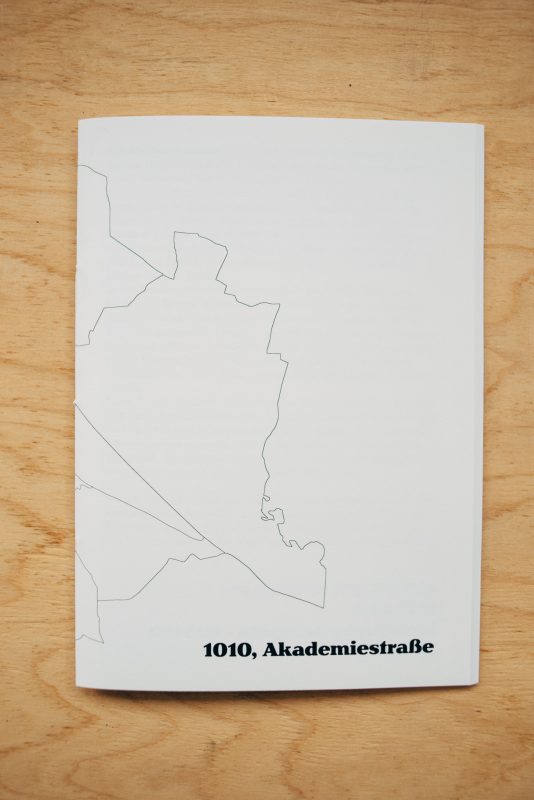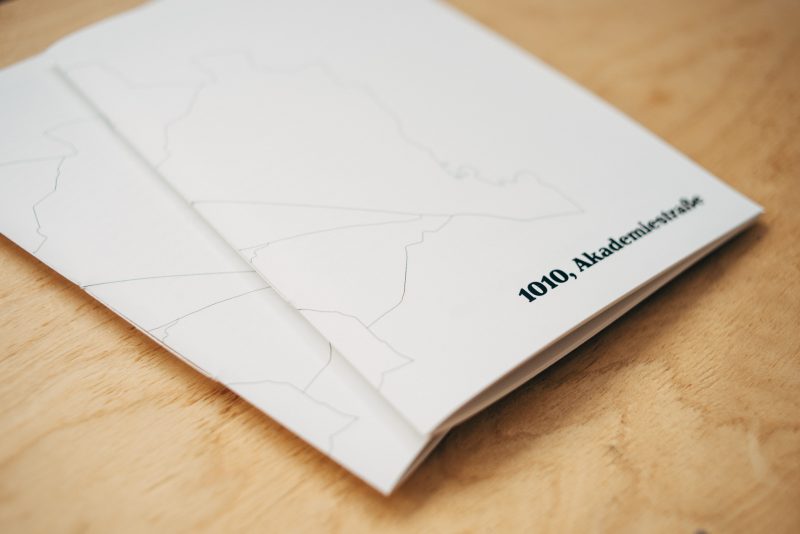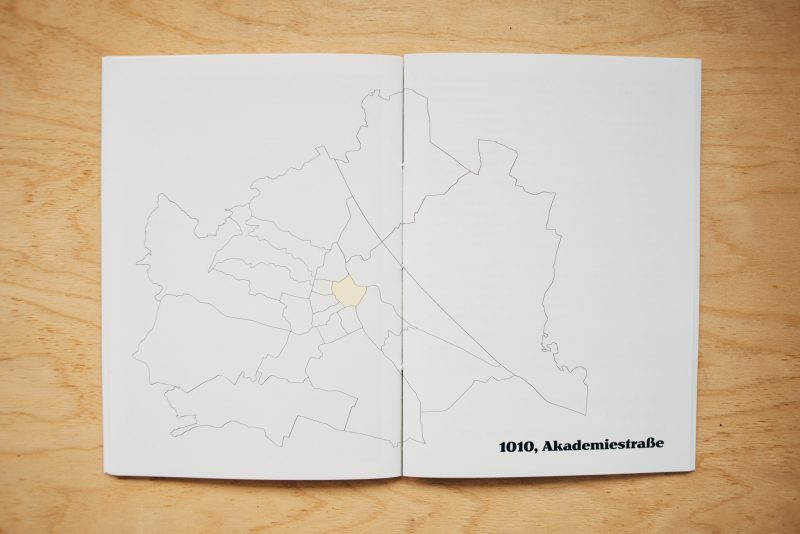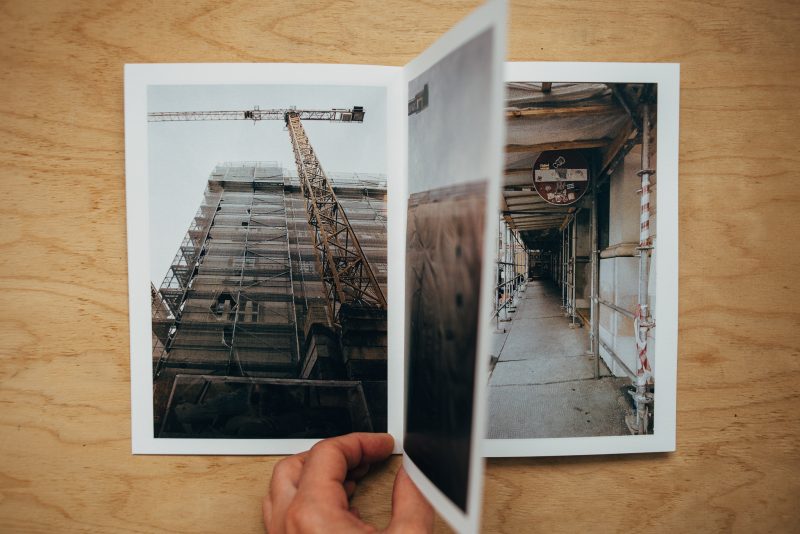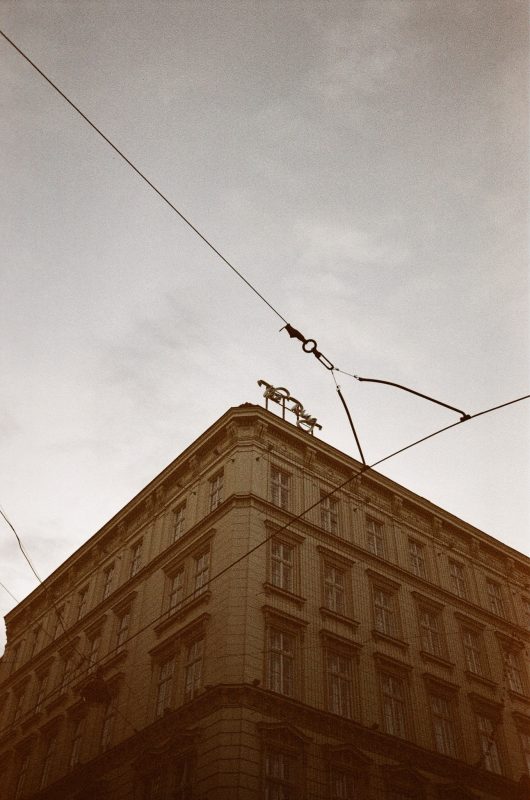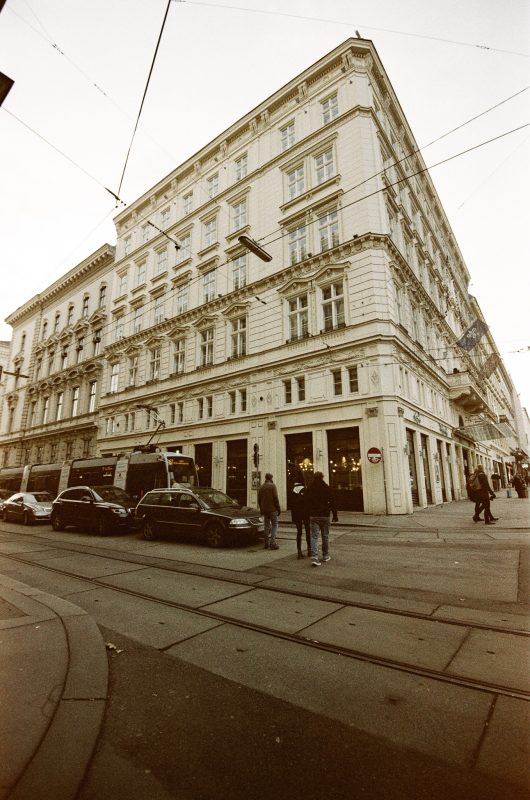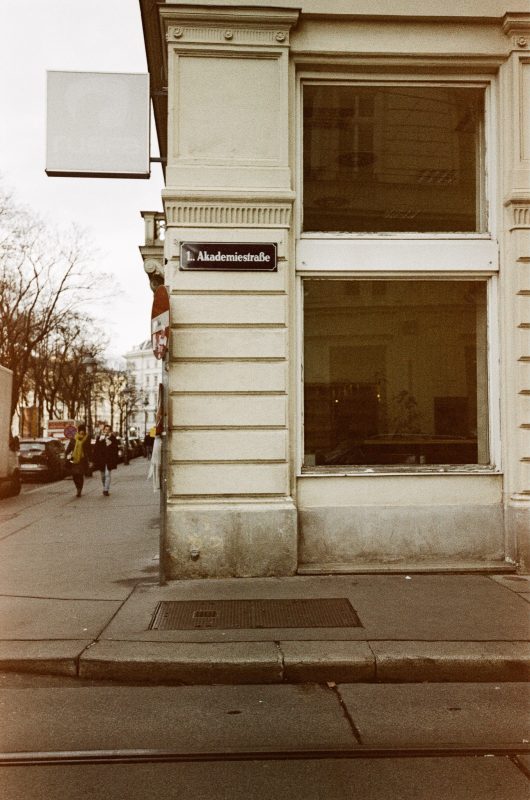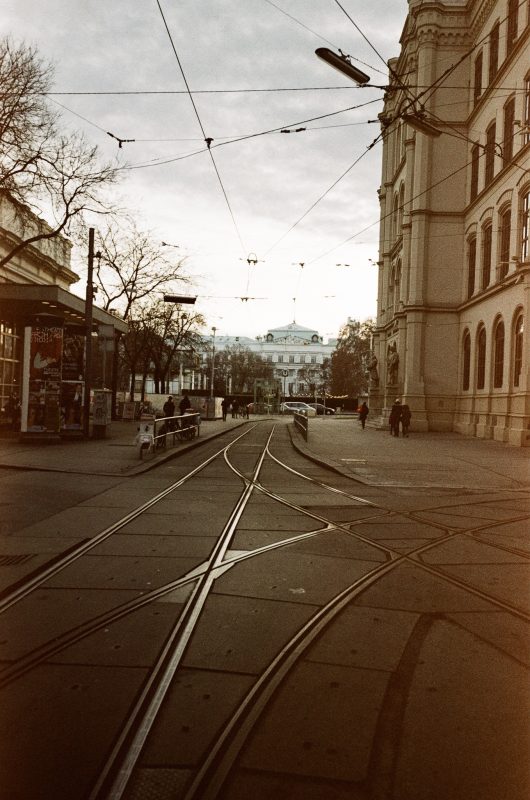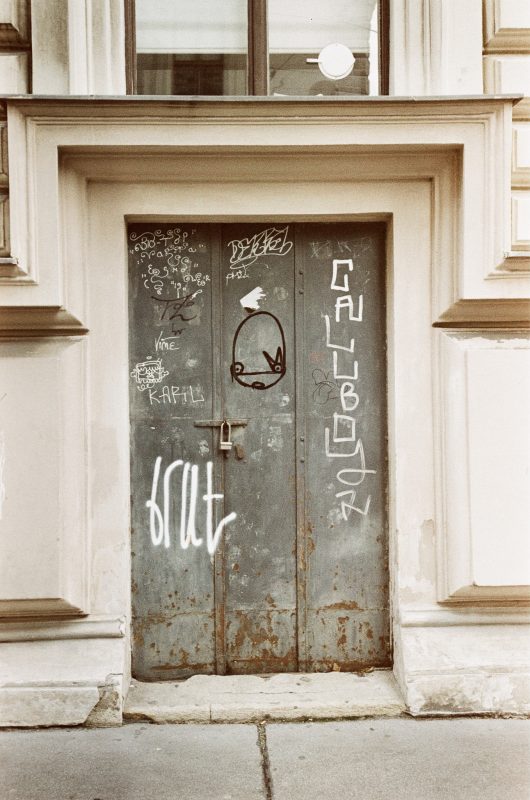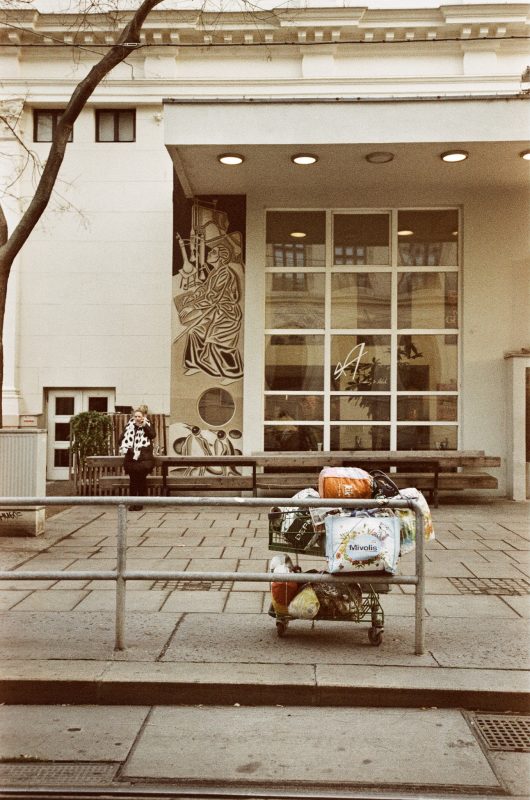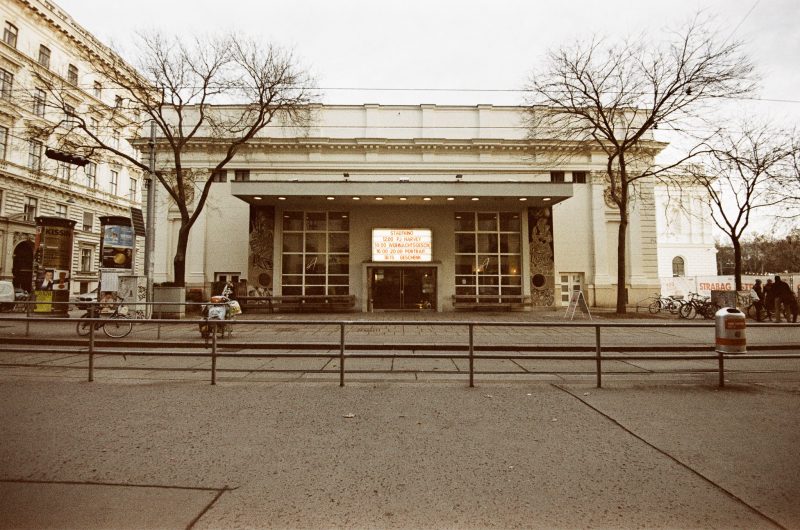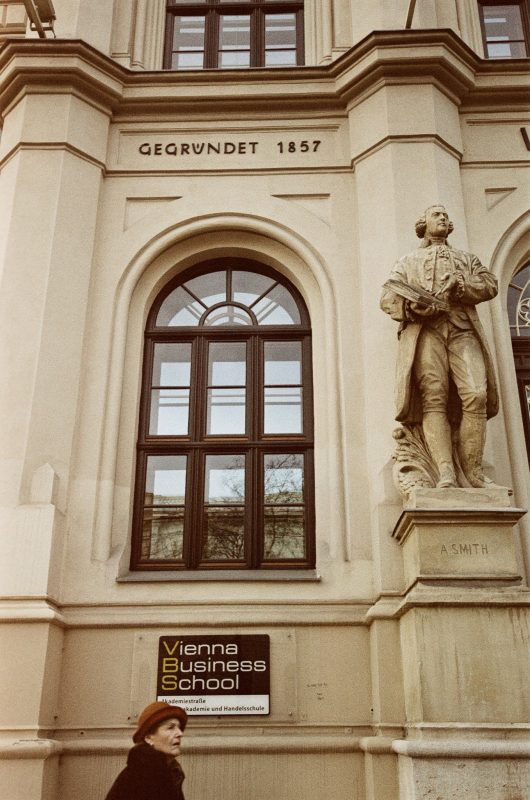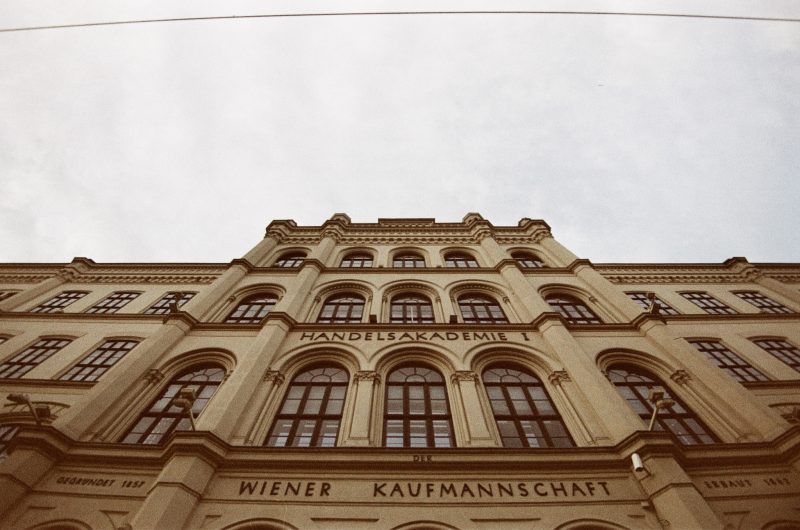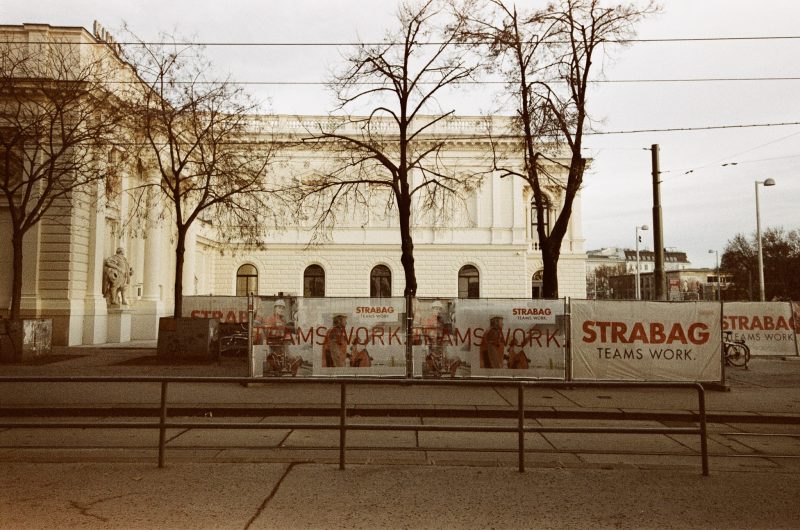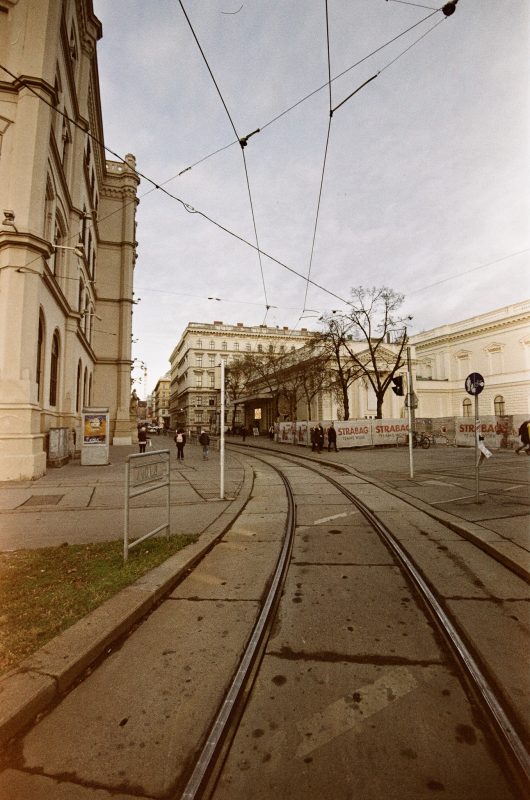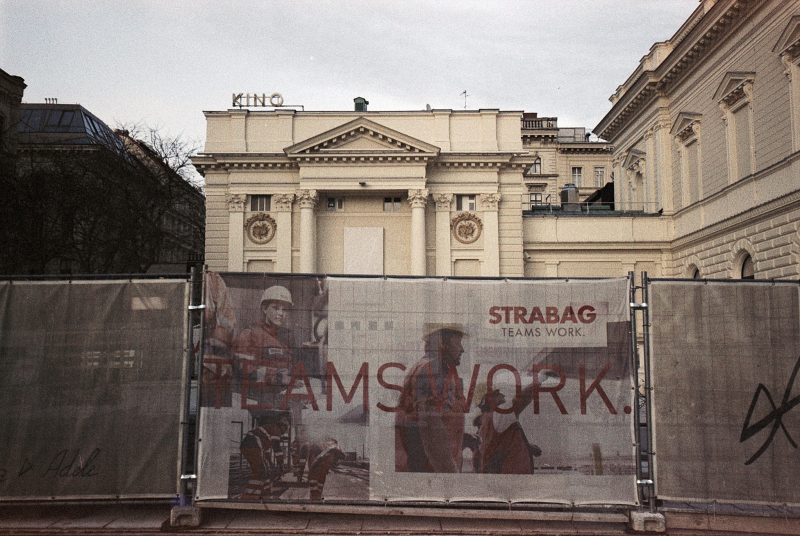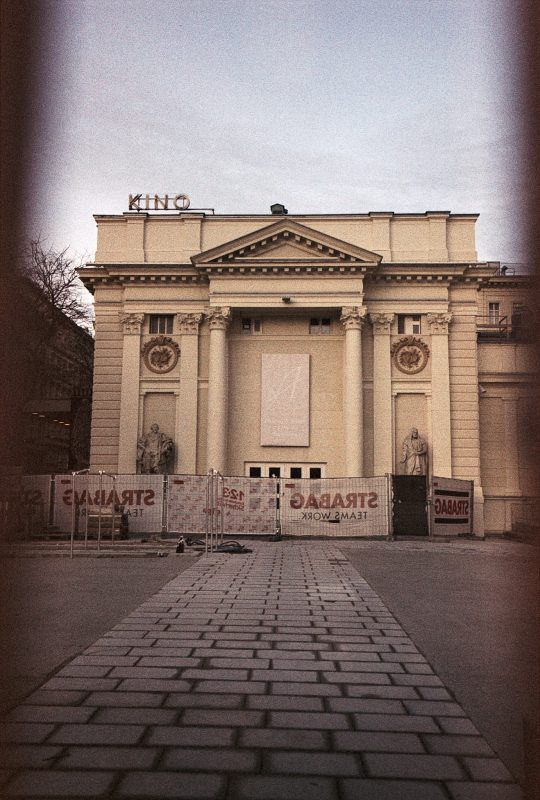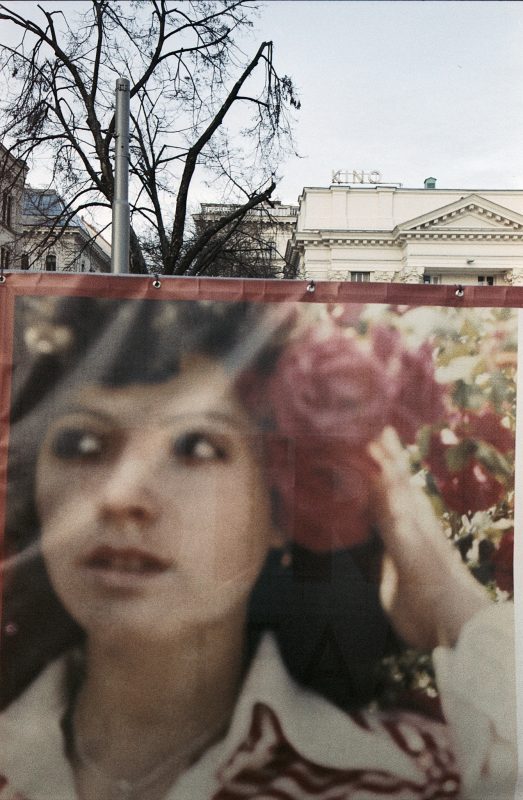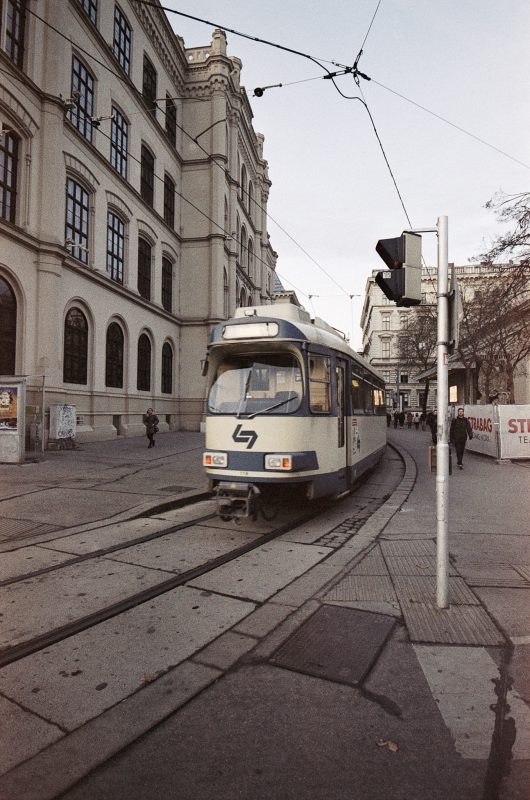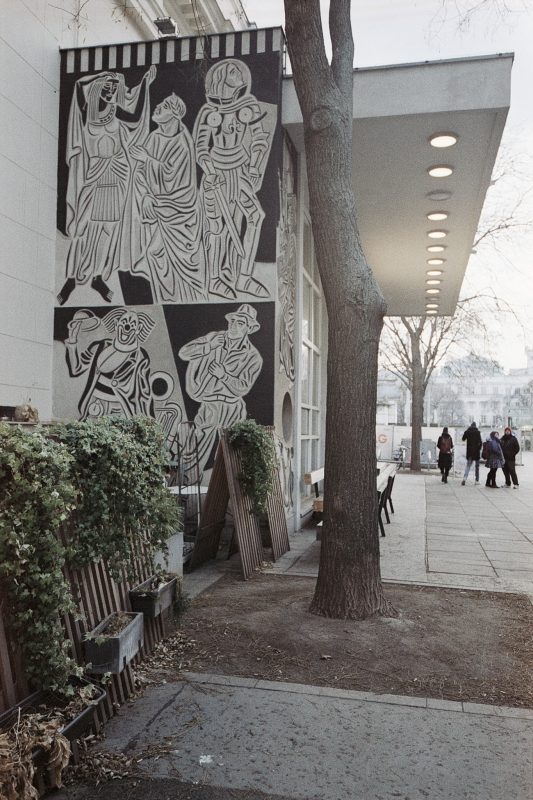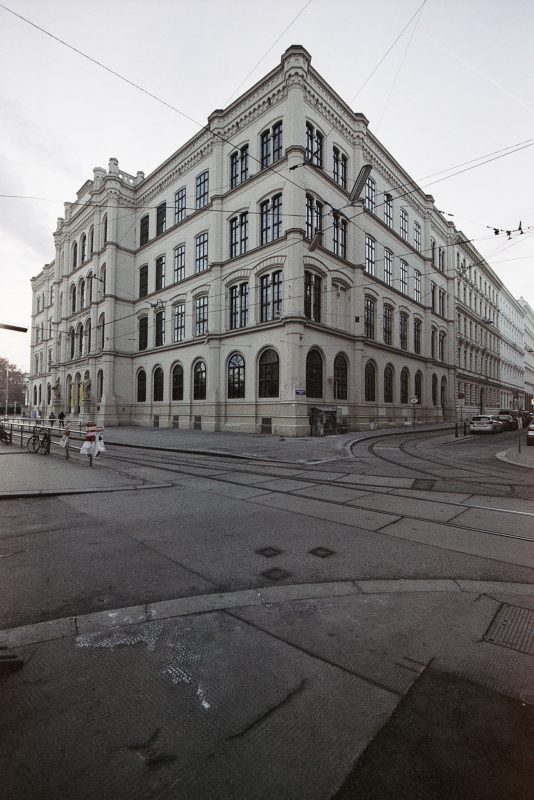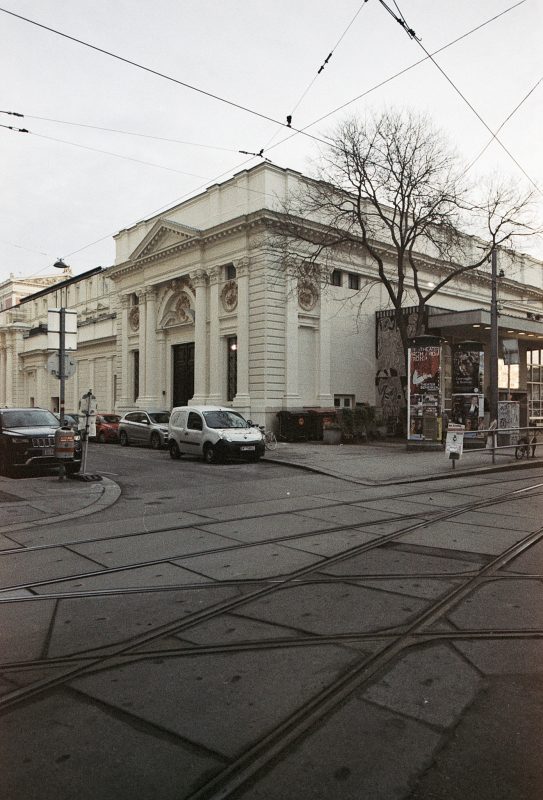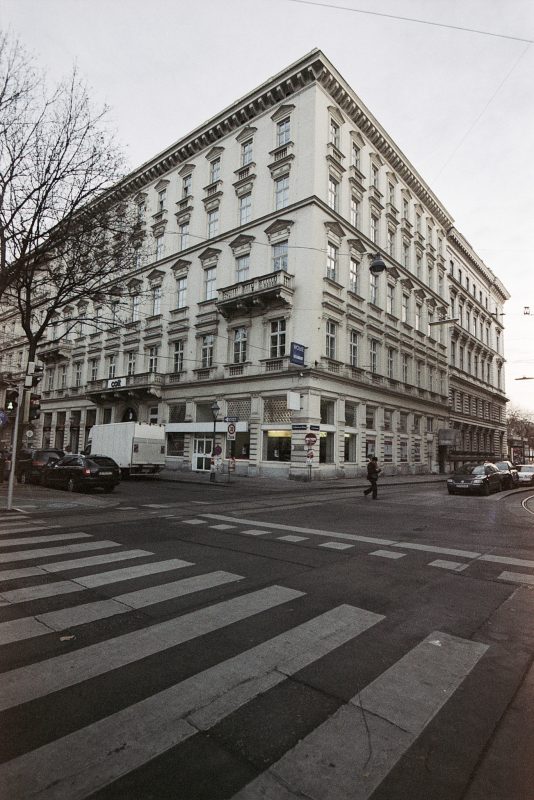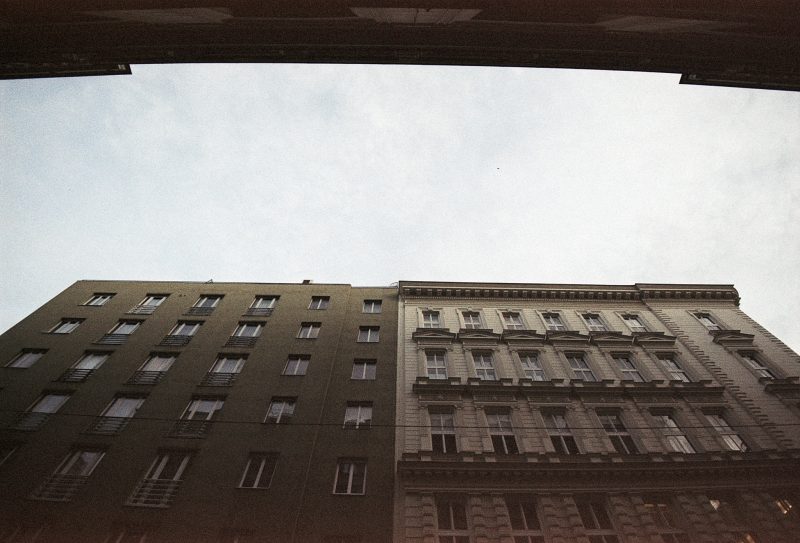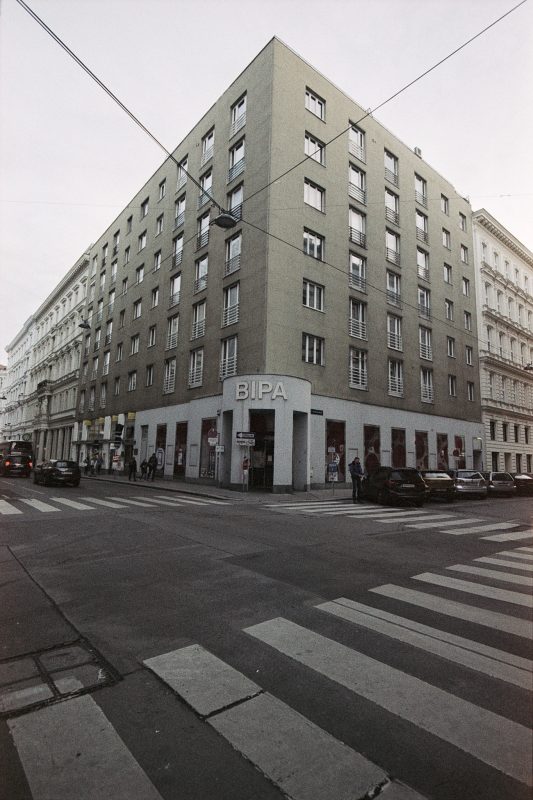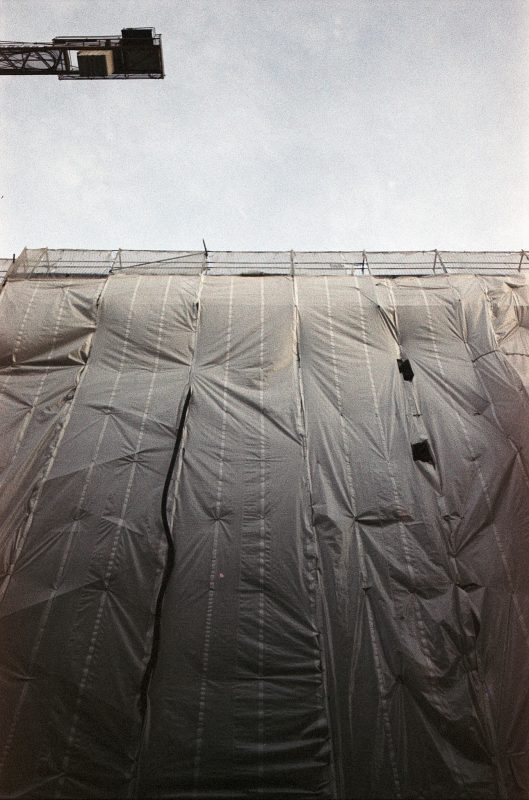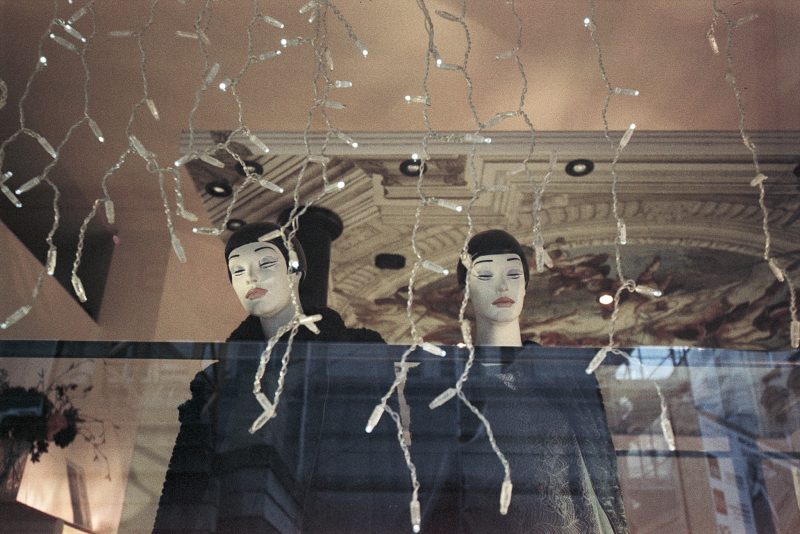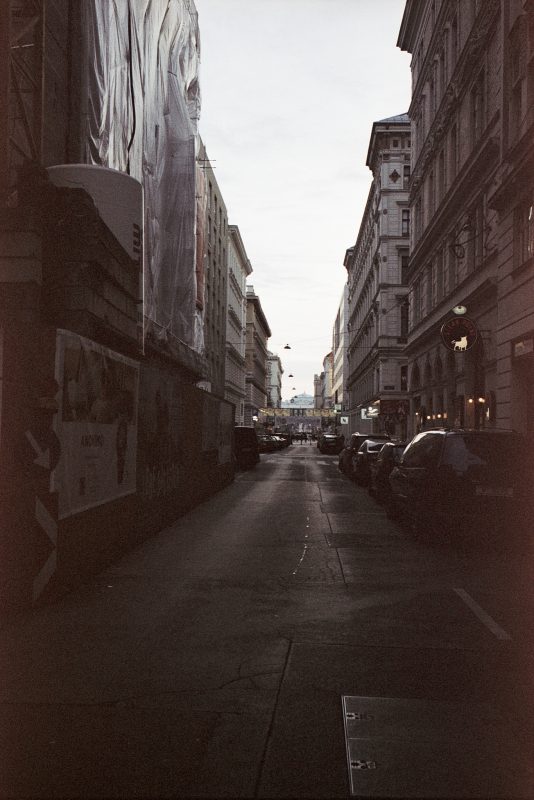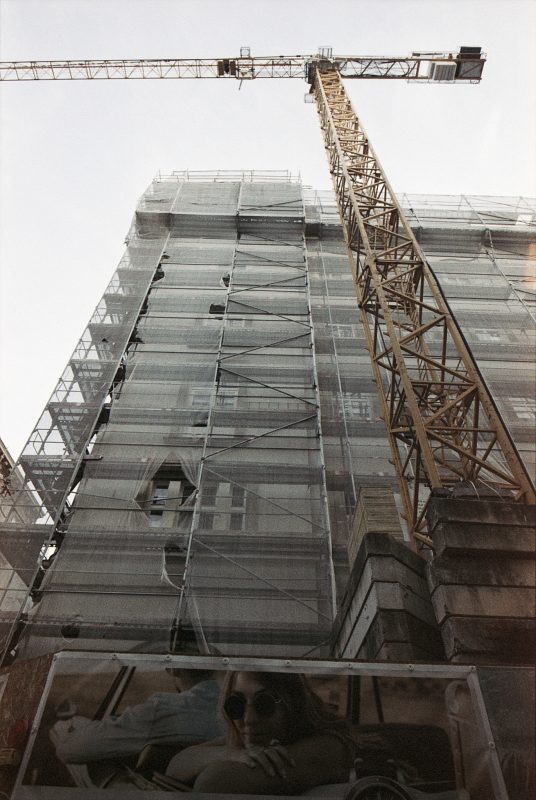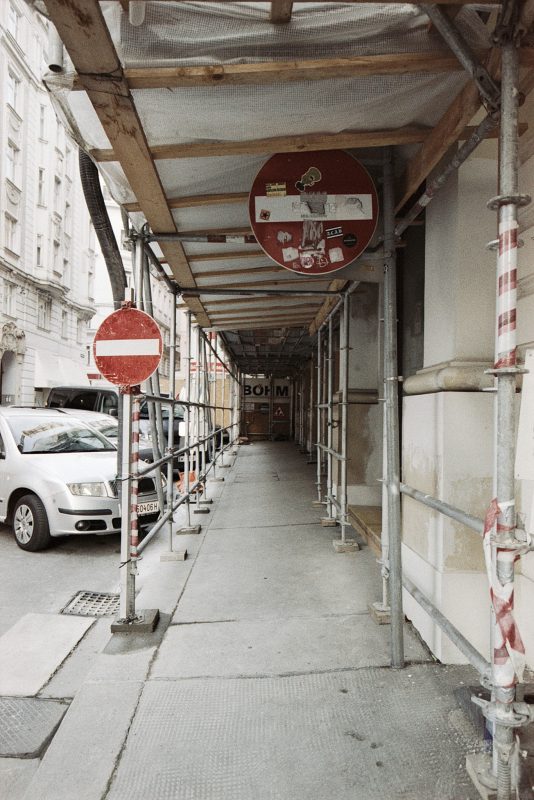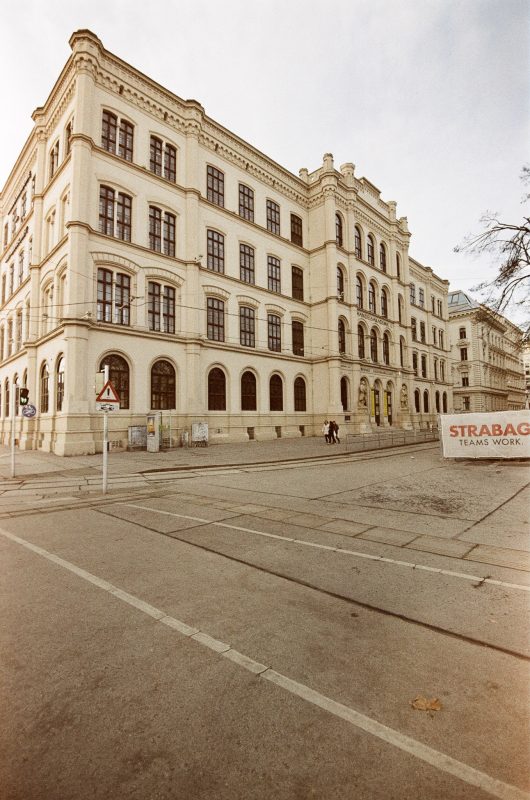Akademiestraße
1010 Innere Stadt
€ 22,00
Pages: 40 + cover
Edition: 5 + artists copy (first edition)
Date: 2019
Film: Lomography Metropolis
Camera: Nikon F100
4 in stock
Buy a print
Akademiestraße was named in 1862 after the Handelsakademie I, which was built at number 12. The street was extended on November 16, 1881, by building on the Wallfischplatz.
The Handelsakademie (Akademiestraße 12, Karlsplatz 4, Bösendorferstraße 8; Handelsakademie I der Wiener Kaufmannschaft, originally „Wiener Handelsakademie“) was built by Ferdinand Fellner the Elder in 1860-1862. Statues (Christoph Columbus and Adam Smith) by sculptor Josef Cesar flank the main entrance (1862) In 1909 Eduard Frauenfeld carried out a renovation (fourth floor).
In the 1880s there was a famous Viennese coffee house, the Parsifal by Julius Oselmayer, at Akademiestrasse 1. It was named after Richard Wagner‘s opera, which was premiered in Bayreuth in 1882. The café was not only heavily frequented by Wagnerians and later supporters of Gustav Mahler, the regular guests also included Karl Kraus and Robert Musil‘s round table, which also supported the restaurant financially.
The Künstlerhaus cinema is located in Akademiestrasse, opposite the Handelsakademie. The “Künstlerhaus cinema” (now “Stadtkino im Künstlerhaus”)opened in 1949 as a conversion of an exhibition hall to ensure the continued existence of the Künstlerhaus. Alfons Hetmanek was the planning architect. The cinema is built in the style of a classic theater and is considered one of the most beautiful in Vienna.
On April 26, 1919 a demonstration for financial support for disabled people returning home, war invalids and those who had been disarmed took place at Akademiestraße. The demonstration counted 3,000 participants and was violent.

